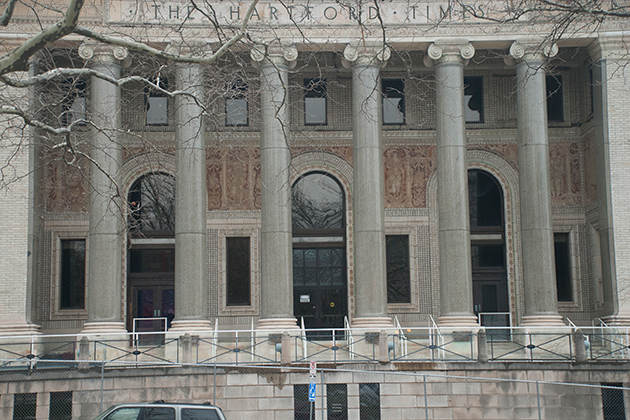
This week’s anticipated signing of agreements to establish a dynamic new UConn campus in downtown Hartford represents one of the most significant events in the University’s recent history, positioning it to continue its rising prominence in top-tier academics, service, and research.
The Board of Trustees on Tuesday is expected to approve documents to move operations and programs of the West Hartford campus to a new location to be known as UConn Hartford, anchored by the Hartford Times building.
The move represents far more than a new address for programs and offices.
It will be a milestone in the life of the University and Hartford, helping UConn fulfill core aspects of its academic mission while establishing a classic urban campus that complements the capital city and becomes part of its very fabric.
UConn officials will sign the documents Tuesday in a public event near the Hartford Times building with the developer, The HB Nitkin Group, along with the Capital Region Development Authority and the state Office of Policy and Management.
About 2,300 commuting students and 250 employees will be based at UConn Hartford, where classes are anticipated to begin in fall 2017.
The move returns UConn to its urban roots in Hartford, where it had been located from its opening in 1939 until it moved in 1970 to the West Hartford location.
Laura Cruickshank, UConn’s master planner and chief university architect, says UConn Hartford will be a neighborhood campus centered around the Times building, which will retain its iconic façade and include the addition of a new, attached five-story building.
The project is being designed by Robert A.M. Stern Architects, an internationally renowned firm whose portfolio includes work on hundreds of buildings for institutions of higher learning, of every academic type, at both public and private universities, Cruickshank said.
“The iconic Times building becomes the centerpiece of UConn Hartford and the program spreads out around it, integrating into the neighborhood and community,” says Cruickshank. “Launching this undertaking is a truly major and exciting event in the life of UConn.”
The architectural design of the project meets the functional needs of the UConn Hartford academic program, while respecting the style, size, and aesthetic of the Hartford Times, she says, and reflects the diverse architecture in the neighborhood. The materials for the exterior of the building are still being determined, but will be “sympathetic to the Hartford Times traditional design.”
The restored Hartford Times building will be joined to the new building by an atrium proportional to the Times structure and the new five-story building.
A neighborhood campus
In keeping with the neighborhood campus concept, there will be an exterior courtyard open daily to the public, and retail stores on three sides of the building to enliven the streets and encourage public visits, Cruickshank says.
In addition to the historic significance of the move, establishing UConn Hartford as a neighborhood campus includes integrating its offerings with the nearby Hartford Public Library, Wadsworth Atheneum, Connecticut Science Center, Connecticut Convention Center, and state and city government offices.
UConn’s nearby Graduate Business Learning Center will also be consolidated with the other programs at the new campus, including the Department of Public Policy and School of Social Work.
The University will also add a master’s degree program in engineering at the campus, along with expanded public policy, urban studies, and education programs.
Being located downtown is expected to offer new experiential learning opportunities for students. They will be closer to potential internships, service projects, and jobs in urban K-12 schools, government agencies, businesses, nonprofits, and other entities.
Parking for UConn employees and students will be available in nearby garages – primarily that of the Connecticut Convention Center – under an agreement with the Capital Region Development Authority. The permit costs will closely reflect those paid by UConn employees and students based at Storrs – costs that are far less than market rates for those coveted downtown Hartford spots.
Public transportation in the region is also plentiful, and UConn Hartford will have its own CT Transit stop at the campus. In addition, the University is talking with the bus company about the possibility of establishing a special pass for students, similar to those used by Trinity College students to ride certain routes for free during the academic year.



